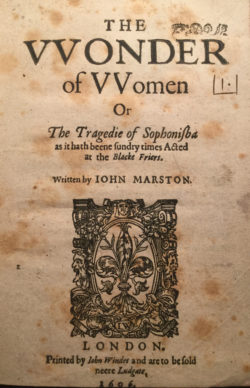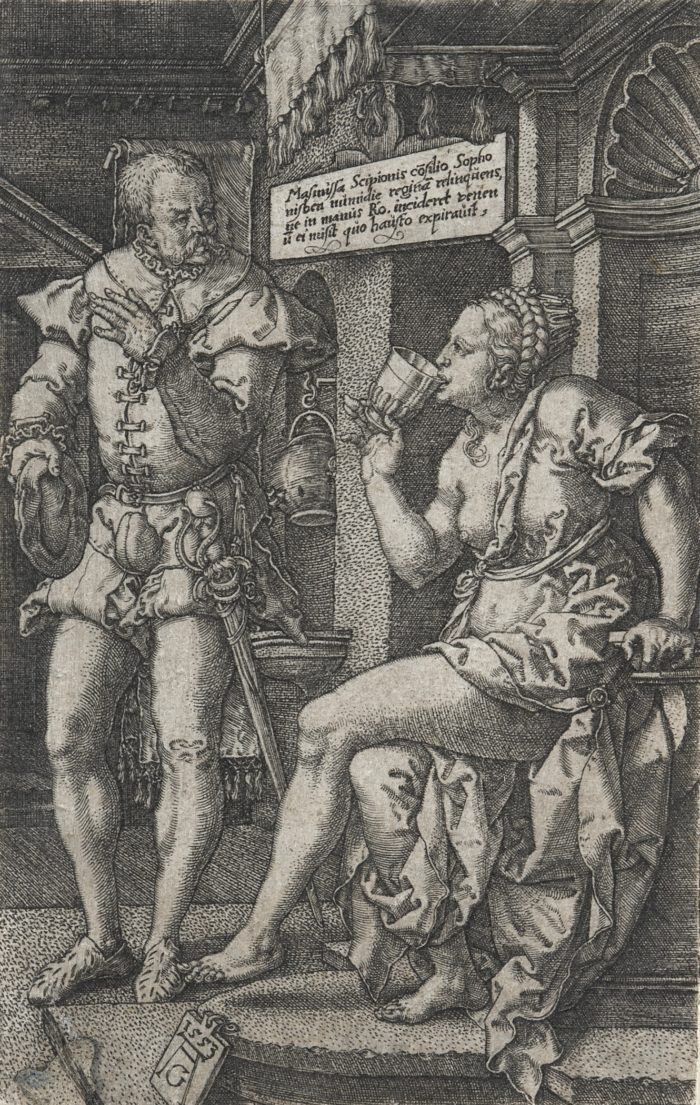<em>Sophonisba</em>
Sophonisba, in the original quarto entitled The Wonder of Women, is Marston’s last completed play. It is entirely different from anything he had written before, and it suggests he was striking out on a new path just before he abandoned the theatre for the church. The play, like Jonson’s Sejanus and Catiline, is based on events in Roman history: it covers the period of the wars between Rome and Carthage recounted by Livy and Appian.
The story of Sophonisba has a long history of Renaissance retellings by authors from Boccaccio , who included her life in De mulieribus claris, his account of Famous Women (pub. 1374), to Gian Giorgio Trissino, who in 1515 made the tale the basis of the first regular tragedy in Italian, to the Frenchman Nicolas de Montreux, whose late sixteenth-century tragedie is similarly classicized with passages of stichomythia and choruses. However, explicitly rejecting Jonson’s learned models, Marston set out not to ‘relate anything as an historian but to enlarge everything as a poet’. Consequently, unlike his predecessors, Marston altered the tale so that it becomes a tragedy about heroic female virtue.
While retaining the historical Roman and Carthaginian characters, Marston added a variety of shocking elements more common in Jacobean tragedies and masques, including a vampire-like witch, a ghost, two different bed-tricks, single combat between the hero and the villain, and the racialized treatment of two wicked minor characters, an ‘Ethiopian slave’ and a ‘black’ serving woman. The dramatic action is enhanced by elaborate visual processions and music, for which explicit instrumental directions are given.
Most radically, Marston remade the title character as a multi-faceted ‘wonder of women’. The Sophonisba of the Roman historians is an ‘evil genius’ (Appian) whose ‘blandishments’ (Livy) mislead her husband Syphax into violating his alliance with Scipio. Marston instead follows and greatly expands the version of the story in which Sophonisba is betrothed to Masinissa before being given to Syphax by the Carthaginians for political reasons. He emphasizes the love between the two by beginning the play with an interrupted wedding night. His Sophonisba is both powerful and feminist: she argues for acknowledging women’s desire to sexual pleasure in marriage, speaks against marriages arranged ‘for state’, cleverly evades attempted rape, and like Cleopatra stoically takes poison to avoid becoming a prisoner of the Roman conquerors.


